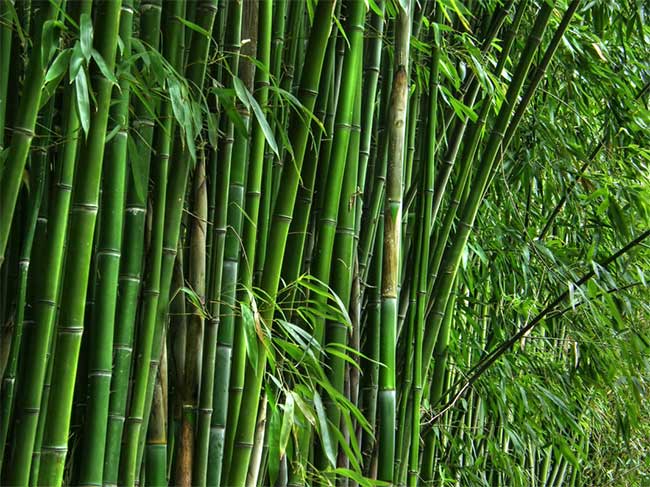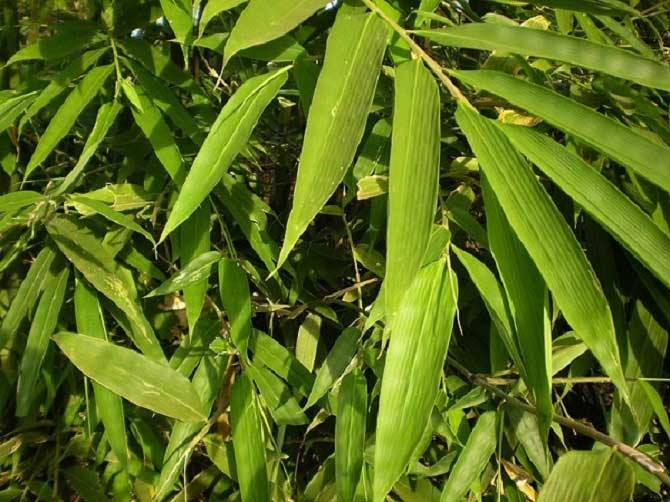Bamboo is not only the “national plant” of the Vietnamese people, but it is also used as an incredibly effective medicine in Traditional Chinese Medicine.
Since ancient times, bamboo has been seen as a symbol of Vietnamese culture. When mentioning bamboo, friends both at home and abroad will think of Vietnam. Behind this beautiful image, bamboo is also a remarkable medicinal plant used in various Traditional Chinese Medicine prescriptions.

When mentioning bamboo, friends both at home and abroad will think of Vietnam.
According to practitioner Nguyễn Đình Cự (Thai Binh Traditional Medicine Association), in ancient Traditional Chinese Medicine texts, the part of the bamboo plant that is used as a valuable medicine is the bamboo leaves, scientifically known as zhú yè. Bamboo leaves are cold in nature, slightly sweet in taste, and enter the heart and lung meridians, helping to clear heat, detoxify, and alleviate colds. They are used to treat conditions like boils, inflammation, suppuration, and fever.
Modern medical research indicates that bamboo leaves contain many minerals such as Silicon, Selenium, Magnesium, Calcium, and Potassium, which are very beneficial for health and can treat various ailments.
“In particular, bamboo leaves have a very strong blood-circulating effect. Whenever the weather changes, leading to stagnation of qi and blood, which causes pain throughout the body, especially in joint diseases, you can use 50g of fresh bamboo leaves boiled in water to drink instead of tea, helping to quickly relieve pain and make the body feel lighter,” practitioner Cự stated.

Bamboo leaves have many medicinal effects that few people know about. (Illustrative image).
Additionally, bamboo leaves are used in various remedies for conditions such as:
Treating fever and dry mouth
The first effect of bamboo leaves to mention is their ability to treat fever and dry mouth. Patients need to prepare 30g of bamboo leaves, 12g of gypsum, 8g of ophiopogon, 4g of pinellia, 7g of rice, 2g of ginseng, and 2g of licorice. Boil all the ingredients in water to make a decoction, and consume one dose daily for quick recovery.
Treating flu and high fever
Prepare 16g of bamboo leaves, 12g of licorice, 16g of honeysuckle flower, 8g of schizonepeta, and 8g of peppermint. Brew these ingredients to drink one dose daily.
Treating seizures in children
When a child has a seizure, the following remedy can be applied: 16g of bamboo leaves, 12g of ophiopogon, 12g of rehmannia, 12g of spatholobus, 10g of gardenia, 12g of unripe fruit of the mulberry, and 8g of peppermint. Brew the mixture and consume it evenly throughout the day; the seizures will gradually subside.
Treating dry cough
For dry cough, throat irritation, and pain, the patient should prepare 12g each of bamboo leaves, mulberry root bark, and pennywort, along with 8g of gardenia fruit, 8g of lime leaves, and 6g of licorice. Brew these ingredients and drink twice a day after meals.
Treating measles during the eruption phase
One lesser-known effect of bamboo leaves is their ability to treat measles during the eruption phase. Simply apply the following remedy: 20g of bamboo leaves, 16g of ground plantain, 16g of honeysuckle flower, 12g of ophiopogon, 12g of codonopsis, and 12g of licorice. Boil thoroughly and divide into doses to drink throughout the day. Continue this treatment until recovery.



















































